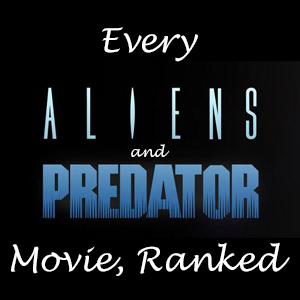Quentin Tarantino low-key makes fun of 1969-era movie- and TV-making in “Once Upon a Time … in Hollywood.” But the production design by Barbara Ling and cinematography by Robert Richardson are as lush as “La La Land” (2016) and arguably even more impressive because this film is recreating a very specific time. So there’s no doubt the writer-director adores this time period.
Brad Pitt, as Cliff Booth — stuntman and best friend of Leonardo DiCaprio’s Rick Dalton – carries us through a meandering, almost-beside-the-point narrative. He’s too charming to be “just a stuntman.” Plus, he has a foot in two classes — living in a trailer but regularly hanging out at Rick’s nice home. He loves his dog, but he can beat up anybody if he needs to.
Both Pitt’s charisma and the inscrutability of Cliff make him a good tour guide through 1969 Hollywood. One of my favorite sequences in the nearly 3-hour film is a montage of neon store signs — from marquees to diners — lighting up for the night. The delicious nostalgia of the nightscape is almost enough to make a person swear off the one-click, two-day shipping of modern times (almost).
DiCaprio gives the weirder performance as a fading star who has always been insecure (and always cheered up by Cliff), and who is prone to crying in public. Rick’s career launched with the TV Western “Bounty Law,” simultaneously brought to vibrant life and satirized by Tarantino. We also see clips of Rick hosting the pre-“SNL” “Hullaballoo” and doing a cigarette commercial.
Like “La La Land,” “Lost in Translation” and TV’s “Marvelous Mrs. Maisel” and many other examples, “Once Upon a Time” is another artful examination of the ephemeral and strange nature of stardom and industry relationships. But Tarantino never stops to drive home that point; instead, we absorb it over the film’s relaxed and winding course, which has its share of tributaries.
Among these is the story of Margot Robbie’s Sharon Tate, who lives with husband Roman Polanski in the house next to Rick, and whose career is taking off. She spends an afternoon taking in one of her own movies to gauge audience reaction. Unusually for such a fine actress, Robbie is overshadowed here because her arc is a foil for that of the leading men. Since Tate (who was murdered later in 1969) and Polanski are real people, it’s understandable (although not a given, by any means) that Tarantino would keep them off to the side.
Almost every performance in this talent-laded film plays second fiddle to the time-travel tourism. But Margaret Qualley, who also had a memorable turn in “The Nice Guys” (2016), deserves mention as sex-on-a-stick hitchhiker Pussycat. After several abortive almost-meetings, Cliff picks up the girl and drives her to her hippie commune on the site of the practically abandoned “Bounty Law” town set outside of town.
Calling to mind “Death Proof” (by the way, Kurt Russell also has a role in this film), the ranch commune sequence is classic Tarantino as we soak up the oddity of this location and style of living, with clues doled out piecemeal. Also featuring Dakota Fanning and Bruce Dern, it’s my favorite sequence of the film, engrossing when watched at home, probably too long in the theater if you’ve had several sips of soda. There’s nostalgic appeal to the flock of hippie girls wearing little more than their own dried sweat, but also a “Texas Chainsaw”-lite vibe. There’s menace along with the flowers and rainbows.

“Once Upon a Time” is meandering in its focus, yet straightforward in its narrative format. It’s clear to a viewer what’s real and what’s a movie shoot. Yet the film spends almost as much time showing Rick in a movie role – as a Western villain – as it does showing Rick as Rick. (The Western movie shoot features the late Luke Perry in one of his final roles.)
The very nature of acting (and the image that coalesces as a body of work builds up) can make some actors lose the sense of their true self. The only lucrative gigs Rick can get now are as Western villains (or Western heroes, if he’s willing to go to Italy). When he breaks down in his on-set trailer after messing up some lines, he rips into his own mirror image in full villain persona.
Eventually, even a Tarantino movie has to end. The crazy yet gripping final showdown delivers the violence that had been uncharacteristically lacking up to this point. The director withholds it for so long that it plays like a fresh revelation of his trademark style again.
In 1969, Westerns were about to cede the floor to new genres, including gore flicks and more realistic action movies, and perhaps “Once Upon a Time’s” narrative reflects the real-world chronology of popular cinema. (Or maybe not, but there’s no doubt this film leaves plenty of room for analyses and interpretations.)
There’s never any doubt that “Once Upon a Time … in Hollywood” is a Tarantino film, and while it’s sparse, there’s enough of a story here to keep things moving forward. But the most impressive achievement is the vibrant way the director and his team re-create the truths, stereotypes, humor, drama and all-around craziness of 1969 Hollywood.

